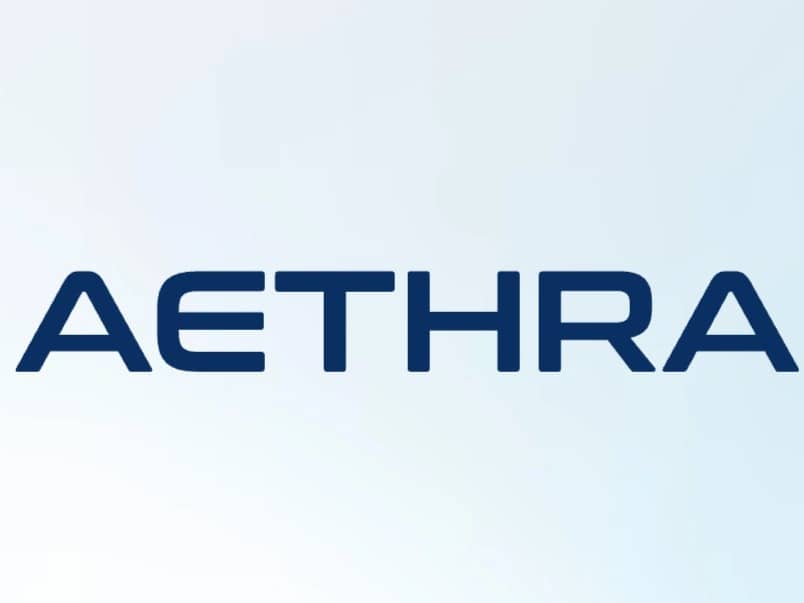订阅 wiki
Share wiki
Bookmark
Aethra AI
Aethra AI
Aethra AI 是一个去中心化运营平台,旨在将人工智能与 区块链 技术集成,从而为组织实现智能、可验证的协调。[1] [2]
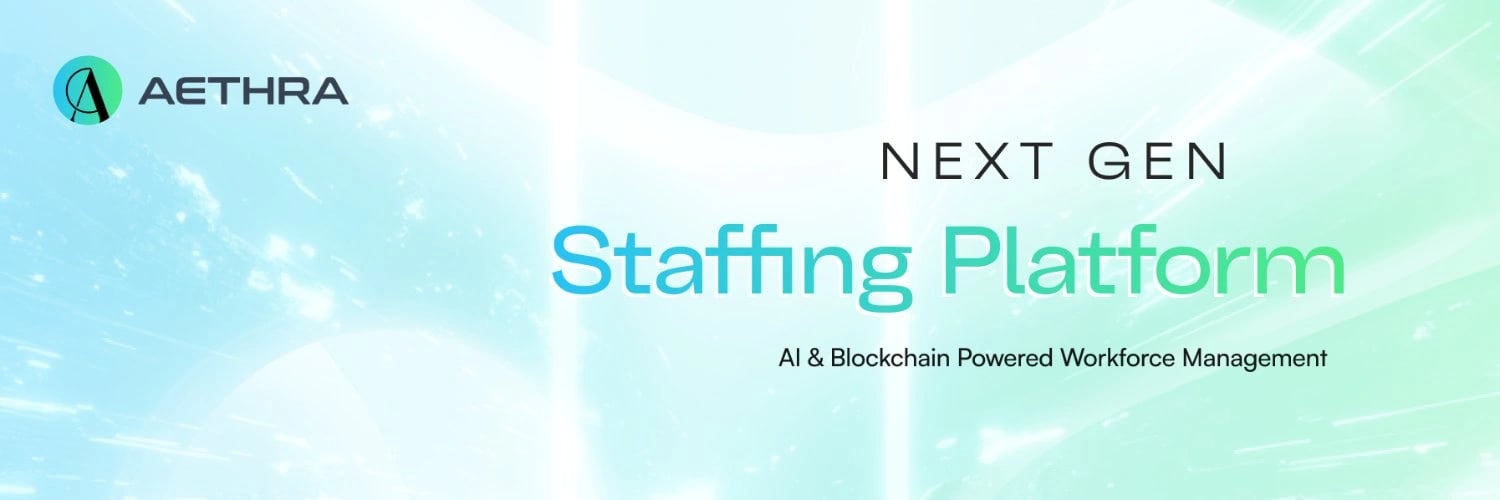
概述
Aethra AI 成立于 2024 年初,旨在解决传统劳动力管理中长期存在的效率低下问题,例如手动工作流程、凭证欺诈风险以及透明度有限。该平台的核心概念是提供一个系统,公司可以在其中定义运营或人才需求,然后由 AI 引擎处理这些需求,以将其与合适的专业人员或内部角色进行匹配。[3] [1]
该平台旨在作为管理人员的综合工具,使他们能够分配角色、监控项目进度并保持对所有运营工作流程的透明监督。截至 2025 年 10 月,该项目推出了其最小可行产品 (MVP),并报告称该产品已在生产环境中用于协调 200 多个角色。与 MVP 发布同时,该项目启动了“试点奖励计划”,以激励社区成员、测试人员和代币持有者提供反馈、识别 UI/UX 改进,并在平台测试阶段为平台开发做出贡献。[1] [3] [2]
产品
- AI 匹配引擎: 使用有关技能、可用性和位置的数据,以更高的准确性将专业人员分配到轮班,并减少缺勤。
- 预测性劳动力规划: 采用预测模型来预测人员配置需求,帮助组织解决短缺问题并提高排班效率。
- 仪表板和分析层: 通过集中式界面提供对劳动力绩效、凭证状态和合规性指标的实时监控。
- 链上凭证验证: 利用基于区块链的证明来立即确认员工资格,支持法规遵从性并最大限度地减少手动验证。[9]
特点
MVP 特点
- 批量员工导入: 使组织能够通过 CSV 或 Excel 上传大型员工列表,以实现快速入职。
- 多账户组织支持: 允许在单个组织内管理多个子账户,以方便部门访问和监督。
- 员工门户和轮班分配: 为员工提供安全的门户,以查看个人资料、凭证和预定的轮班。
- 轮班接受和拒绝: 允许员工直接通过平台确认或拒绝轮班邀请,从而提高排班透明度。
- 持续功能节奏: 建立 6-8 周的发布周期,以根据试点反馈和用户输入进行迭代功能更新。[10]
路线图
- 2025 年 10 月至 11 月: 推出员工门户的多语言支持以及 AI 匹配引擎中的高级筛选。
- 2025 年 12 月: 与企业系统集成,包括安全数据导入/导出、目录同步和单点登录,以及自动合规性报告仪表板。
- 2026 年 1 月至 2 月: 实施社区驱动的功能更新并发布用于实时轮班管理的移动应用程序测试版。
- 2026 年以后: 扩展到教育、公共服务和金融等其他领域,同时将试点计划过渡到全面部署,并建立生态系统合作伙伴关系以扩大采用范围。[11]
用例
- 建筑业:协调经过认证的承包商进行大规模建设。
- 能源:管理技术人员进行可再生基础设施的安装和维护。
- 医疗保健:调动经过验证的医疗专业人员进行快速部署。
- 研发:组建专业的全球研究团队。
- 工业运营: 优化制造环境中的劳动力分配。
- 服务业:将顾问和专家与经过验证的资格相匹配。
- 全球招聘:通过标准化的链上验证实现跨境招聘。[1] [3]
技术
AI 和机器学习
AETHRA 的 AI 引擎旨在通过基于可验证数据的透明系统来协调人才和任务。核心 MVP v1.0 功能包括:
- 角色匹配:根据经过验证的凭证、可用性和绩效评分分配资源。
- 资格筛选:在分配之前通过链上证明检查合规性。
- 预测性规划:预测短期覆盖范围差距和运营需求。
- 实时跟踪:通过事件驱动的后端立即更新仪表板。[6]
链上基础设施
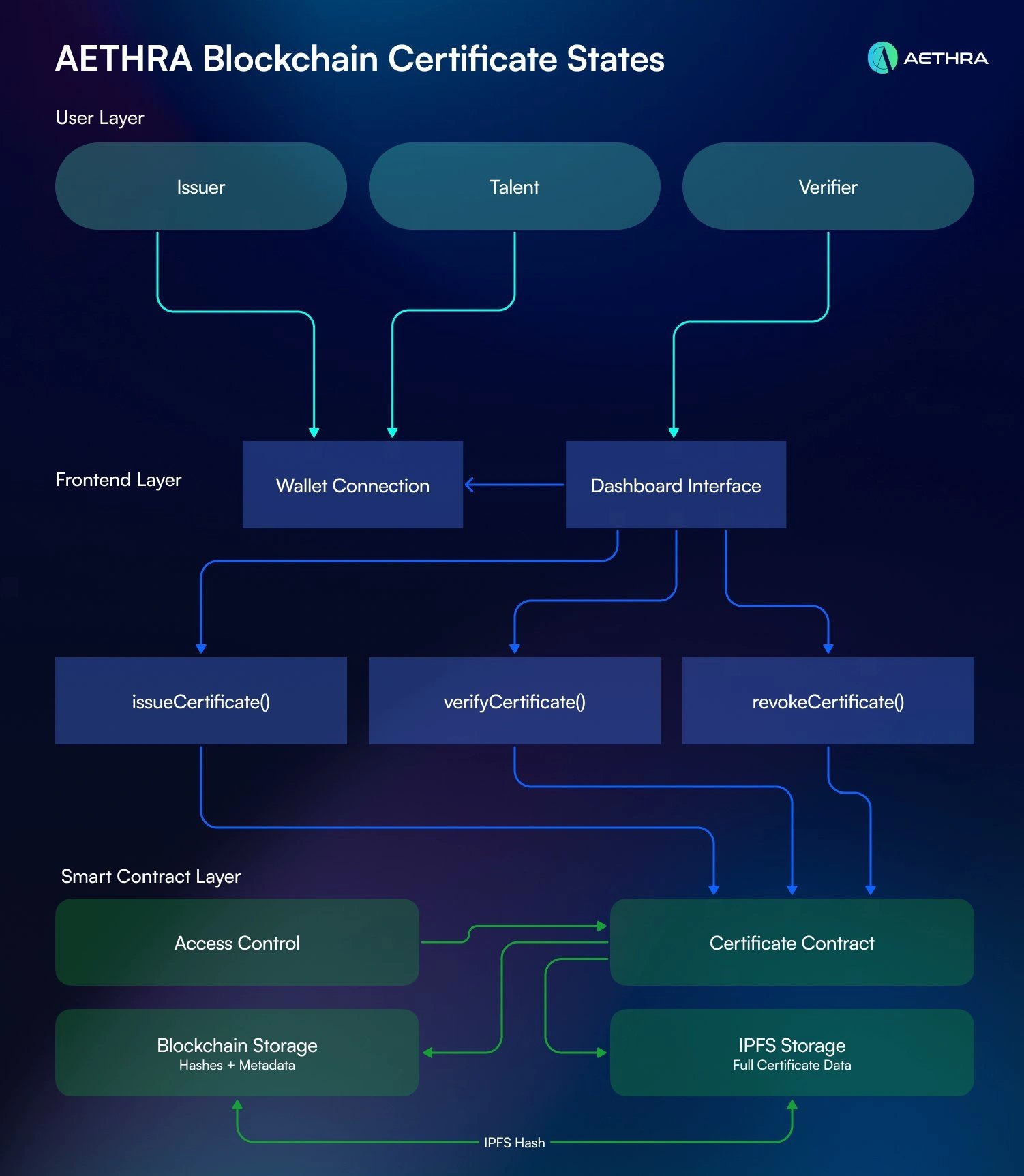
AETHRA 利用 以太坊 主网 作为其链上基础设施,为劳动力协调提供信任、透明度和安全性。该平台将凭证和治理锚定在链上,以避免单点故障并确保可验证性。这种方法旨在提供大规模的信任,因为凭证和决策记录在 以太坊 上,使其难以篡改。它还允许与现有钱包和开发者工具进行全球互操作。[7]
前端和后端
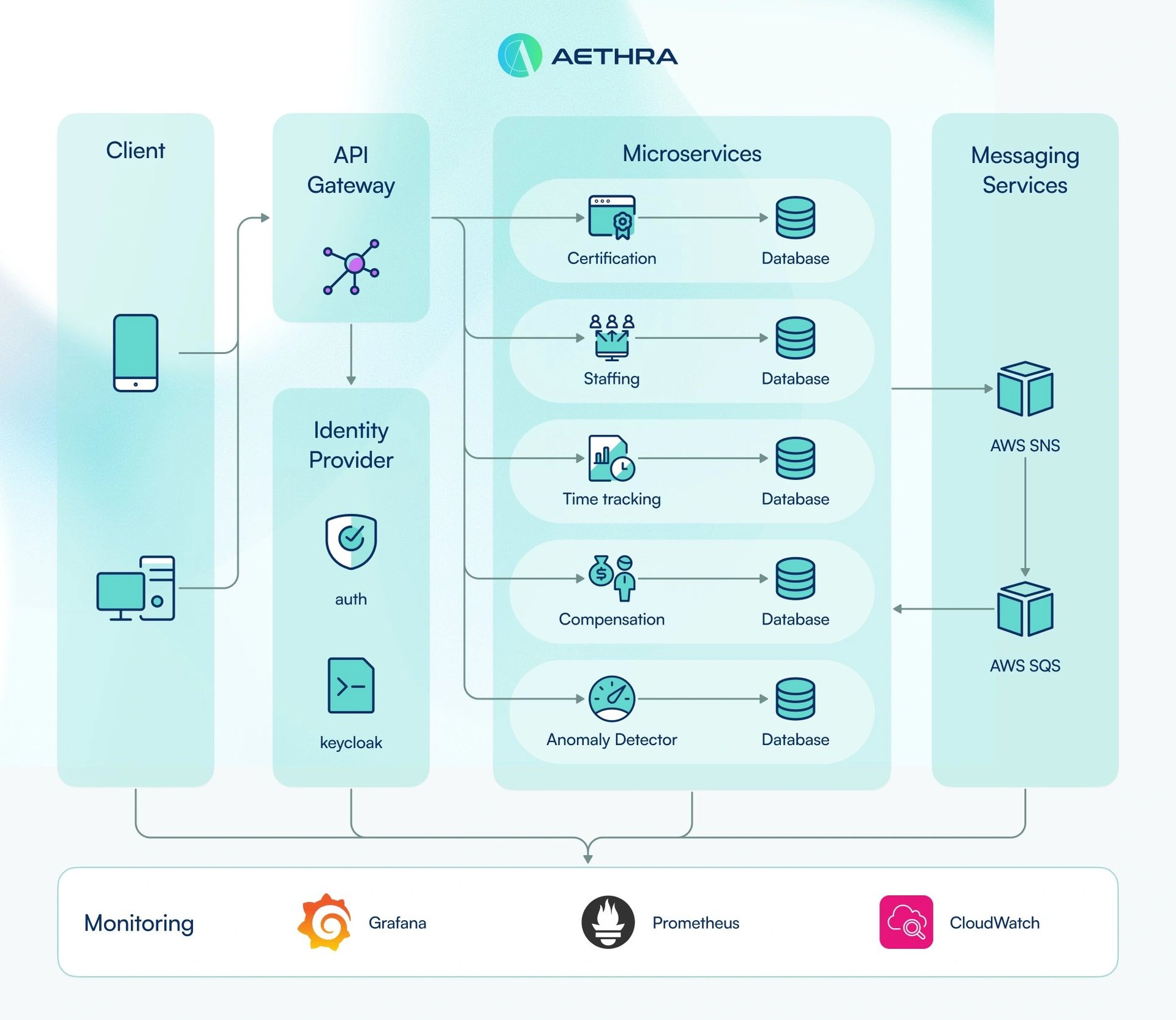
AETHRA 的平台采用现代技术堆栈构建,以实现性能和可扩展性。前端用户界面使用 Vue.js 开发,用于响应式组件和可扩展的单页应用程序 (SPA) 设计。样式使用 Tailwind CSS 处理,以实现实用至上、响应式设计。对于测试,该项目使用 Playwright 进行端到端测试并确保回归覆盖。
后端采用微服务架构构建,其中系统由小型、独立的服务组成,每个服务负责特定的领域,如身份验证或时间跟踪。这种设计允许服务独立运行和扩展,并且每个服务都维护自己的隔离数据库。这些服务之间的通信是事件驱动的,使用 AWS Simple Notification Service (SNS) 广播事件,并使用 AWS Simple Queue Service (SQS) 传递事件。[8]
代币经济学
Aethra AI 平台的原生实用代币是 $AETHRA。它是一个在 以太坊 区块链 上运行的 ERC-20 代币,总供应量固定为 1 亿个代币。该代币于 2025 年 1 月 6 日通过流动性引导池 (LBP) 在 以太坊 主网 上推出,以确保公平的价格发现。此次发布不包括私募和预售,并且在最初的 48 小时内启动了反鲸鱼机制,以确保公平分配。[4] [5]
分配
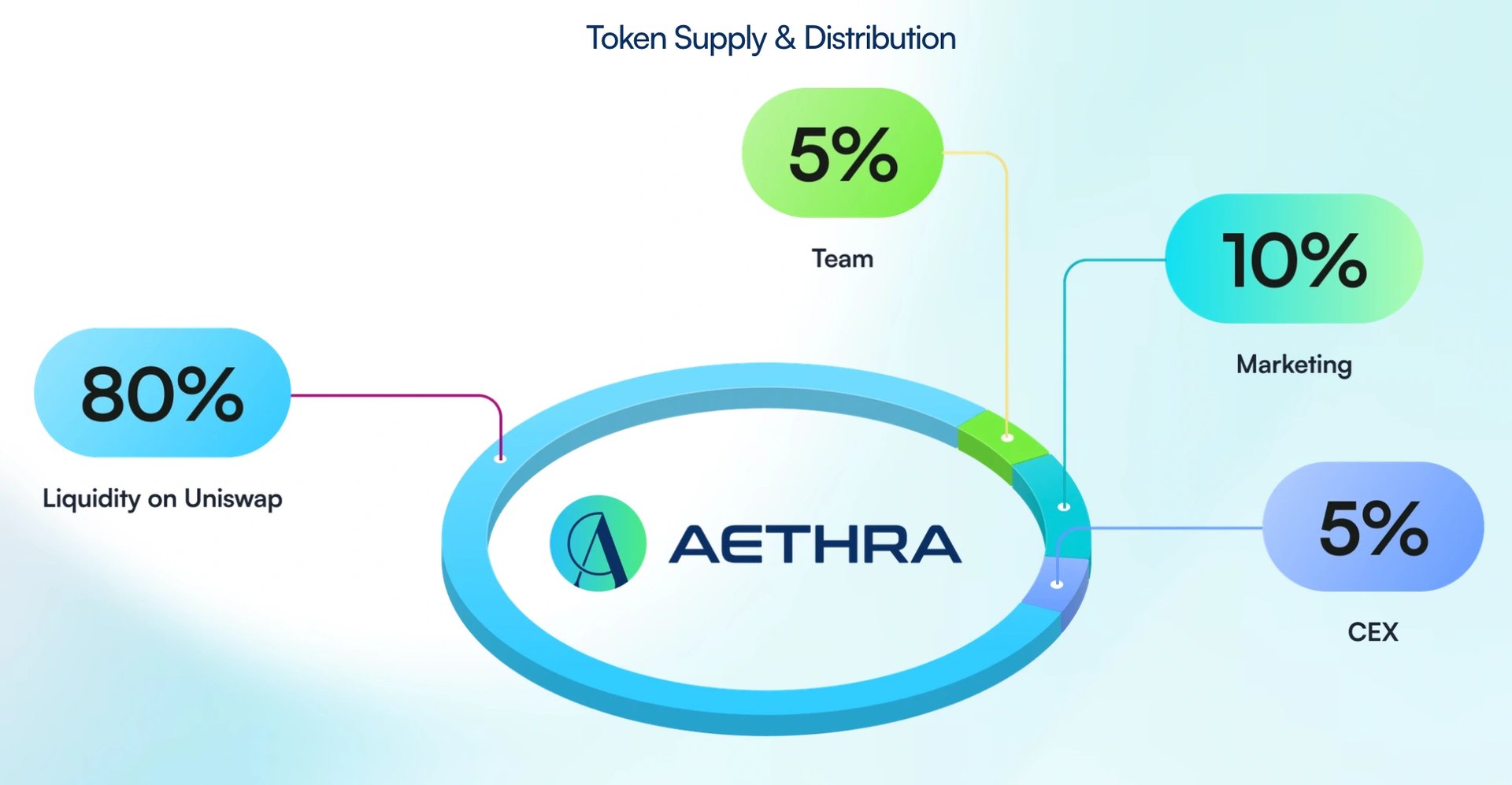
- 社区和生态系统: 80%
- 营销: 10%
- 中心化交易所 (CEX) 上市: 5%
- 团队和顾问: 5% [4]
代币实用性
- 质押: 代币持有者可以质押 AETHRA 以赚取奖励并为网络参与做出贡献。
- 访问和激励: AETHRA 用于解锁高级功能并奖励经过验证的贡献。
- 收入回购: 该平台通过基于收入的回购机制支持代币需求。[5]
治理
Aethra AI 遵循去中心化治理模型,其中 AETHRA 代币持有者可以提出和投票决定协议改进、参数更改和新功能。
发现错误了吗?
